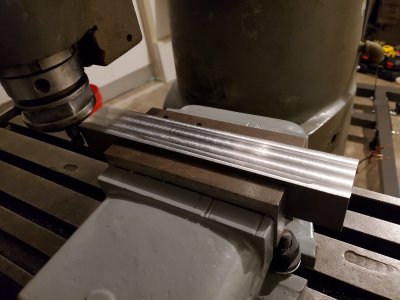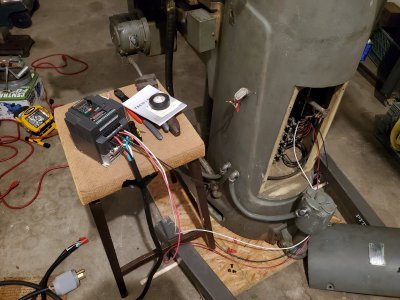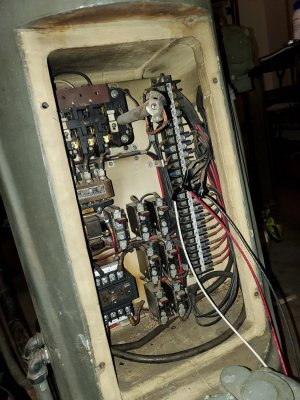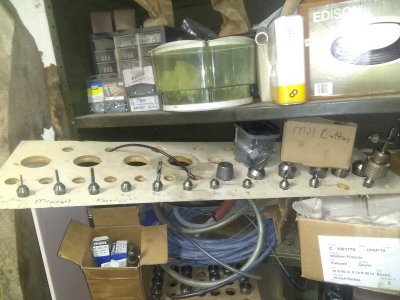- Joined
- Feb 4, 2021
- Messages
- 39
Still mulling electrical things over. I think the belt tensioning setup on my 1-A gets caught before it can give me the last inch or so I need to move the bottom belt around, maybe I just have to hammer on it to get it forward.1B owner here. Following along looking to pick up all I can.
My belt isn't too bad to adjust as long as I give it enough slack.
Someday I hope to go to a VFD. Really interested in how you feel after getting done.
BTW, how did you figure out the year?
The year can be figured out using the serial number on the front of the column, at the top of the V-way and this link here: http://www.lathes.co.uk/cincinnati/page9.html
Mine starts with 6J1V5E, the 5E corresponding to 1957.
Also my circuit interrupter has the date it was installed or made stamped on it as May 1 1957.
As far as the quill locking deflection goes, it's worse than I feared. I checked the quill deflection when fully extended and not locked, there's about 0.0025" deflection (at least, to the left, away from the quill lock). I didn't plan on doing any milling with the quill extended, but it may still rattle around in there while retracted. Plus drilling may be extra inaccurate now. As for the spindle inside the quill, there's about 0.0008" - 0.001" deflection with the quill retracted. Seems like a whole lot...Kinda down on it as it seems I bought quite a lemon.






